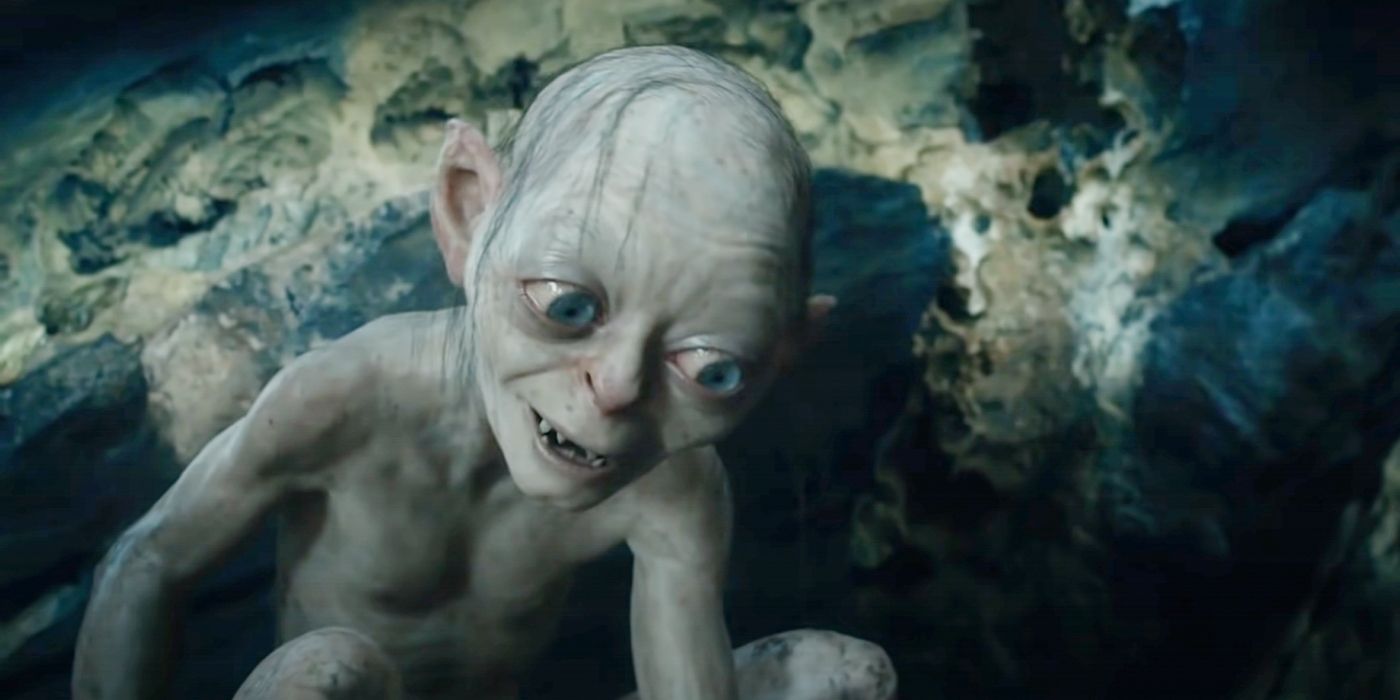A new piece of Lord of the Rings AI art re-imagines the creature Gollum, providing him with a more menacing look than his big-screen counterpart. First featured in J.R.R. Tolkien’s iconic 1937 novel The Hobbit, modern-day audiences are most familiar with the version portrayed by Andy Serkis in Peter Jackson’s The Lord of the Rings and The Hobbit trilogies. Once a halfling named Sméagol whose kindred was closely related to the Hobbits of the Shire, Gollum was slowly twisted in both body and mind by the corrupting influence of the One Ring.
Now a new piece of AI art from Jose Luis Rodriguez Mena offers an alternative vision at what Gollum may have looked like in the finished films.
Far more goblin-like in appearance, this new version of Gollum appears distinctly more frightening than the version Serkis brought to life through his motion-capture performance. Depicted in his watery cave, this Gollum appears every inch the scheming and misbegotten creature that had been subject to the torments of Sauron’s One Ring for years on end.
How Gollum’s Design Has Evolved Over The Years
Nowadays, it is nearly impossible to think of Tolkien’s Gollum without conjuring an image of the cinematic version that was brought to life on screen by Andy Serkis. Widely praised as one of the most impressive performances of both of Jackson’s trilogies, Serkis’ tenure as the twisted and pitiful creature has gone on to become firmly cemented in pop culture as the definitive version of the character. Yet long before The Batman actor ever donned his motion capture suit, Gollum was often represented very differently on screen.
After decades of being depicted in cover art and other illustrations by famed Tolkien artists, Gollum’s first cinematic outing came courtesy of Gene Deitch’s 1967 animated short film The Hobbit. Referred to as Goloom, Deitch’s Gollum counterpart was a vastly different creature who more closely resembled a highly-stylized insect with a large body and thin, spindly limbs. Ten years later, another animated version of The Hobbit was produced by Rankin/Bass and animated by the Japanese studio Topcraft, an early precursor to the famed Studio Ghibli. This 1977 version of The Hobbit imagined Gollum as a frog-like monster with little resemblance to his halfling ancestry.
However, ever since Jackson’s Lord of the Rings trilogy, the character has indelibly been linked to his distinctive appearance first featured in 2002’s The Lord of the Rings: The Two Towers. Despite being shown previously during The Lord of the Rings: Fellowship of the Rings, the design of Serkis’ character was later modified for the second film to better suit his motion-capture performance. Even now, more than 20 years later, newer representations of the character such as the Lord of the Rings: Gollum game still intentionally harken back to Serkis’ iconic version.
Source: Jose Luis Rodriguez Mena/Instagram


